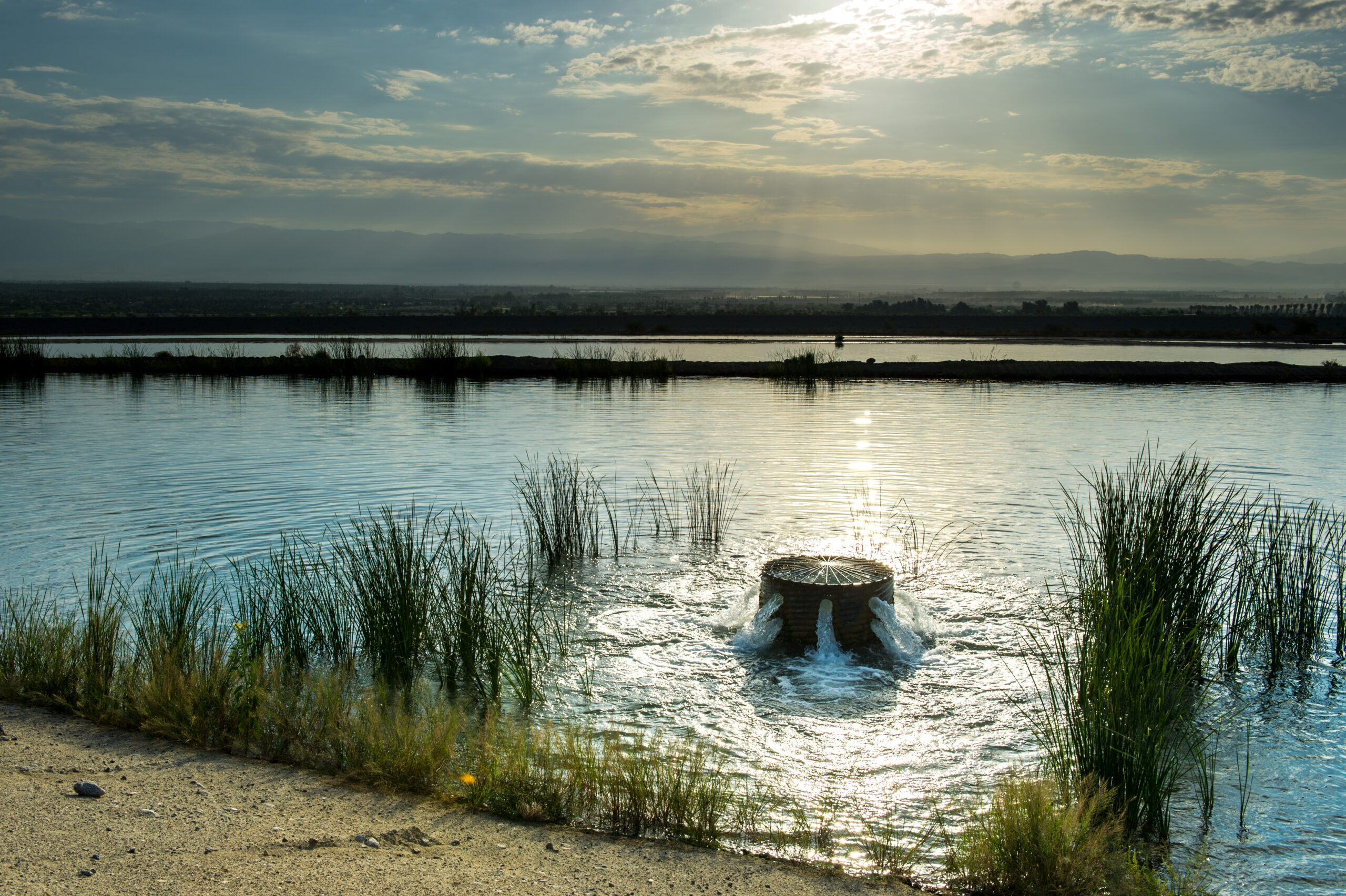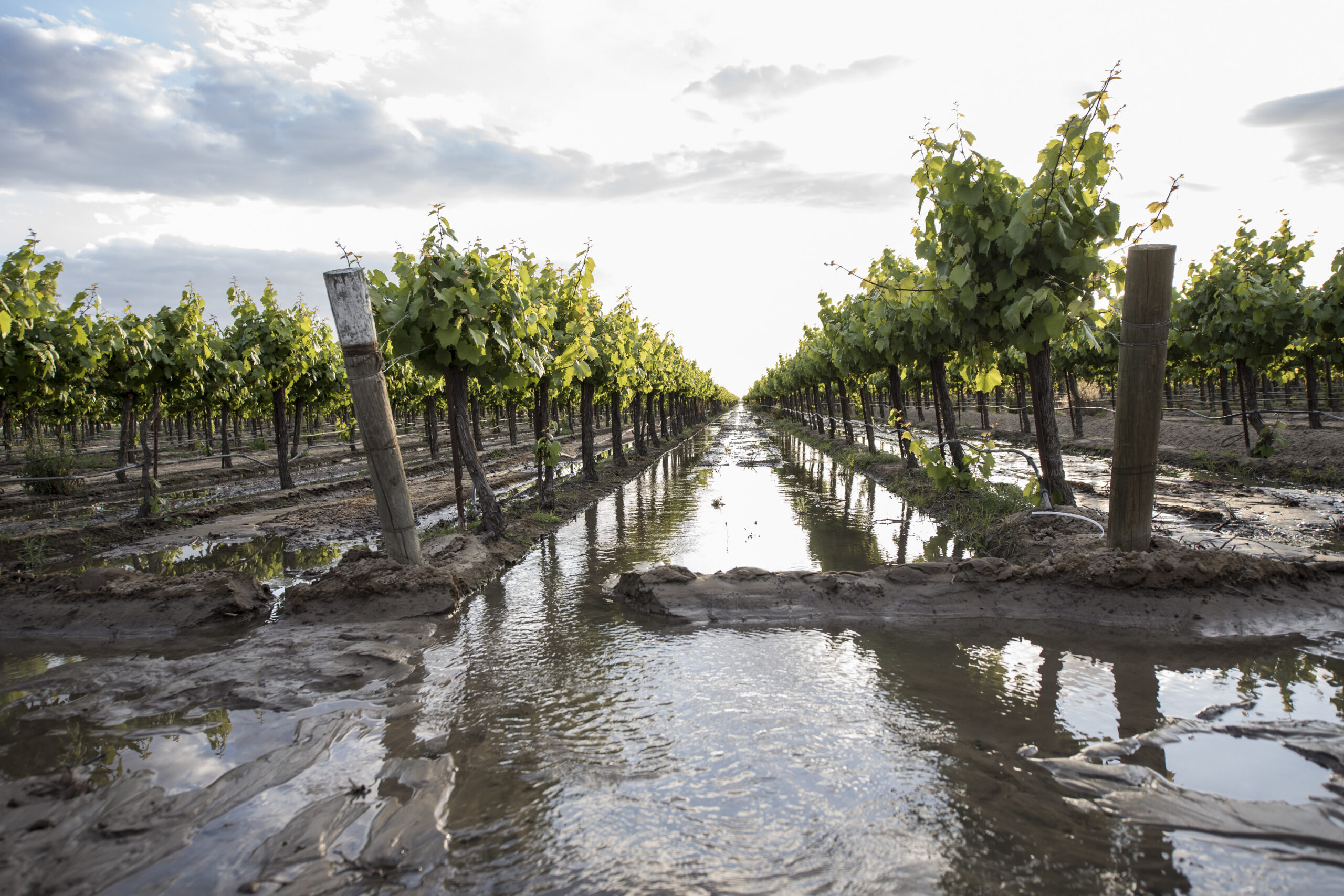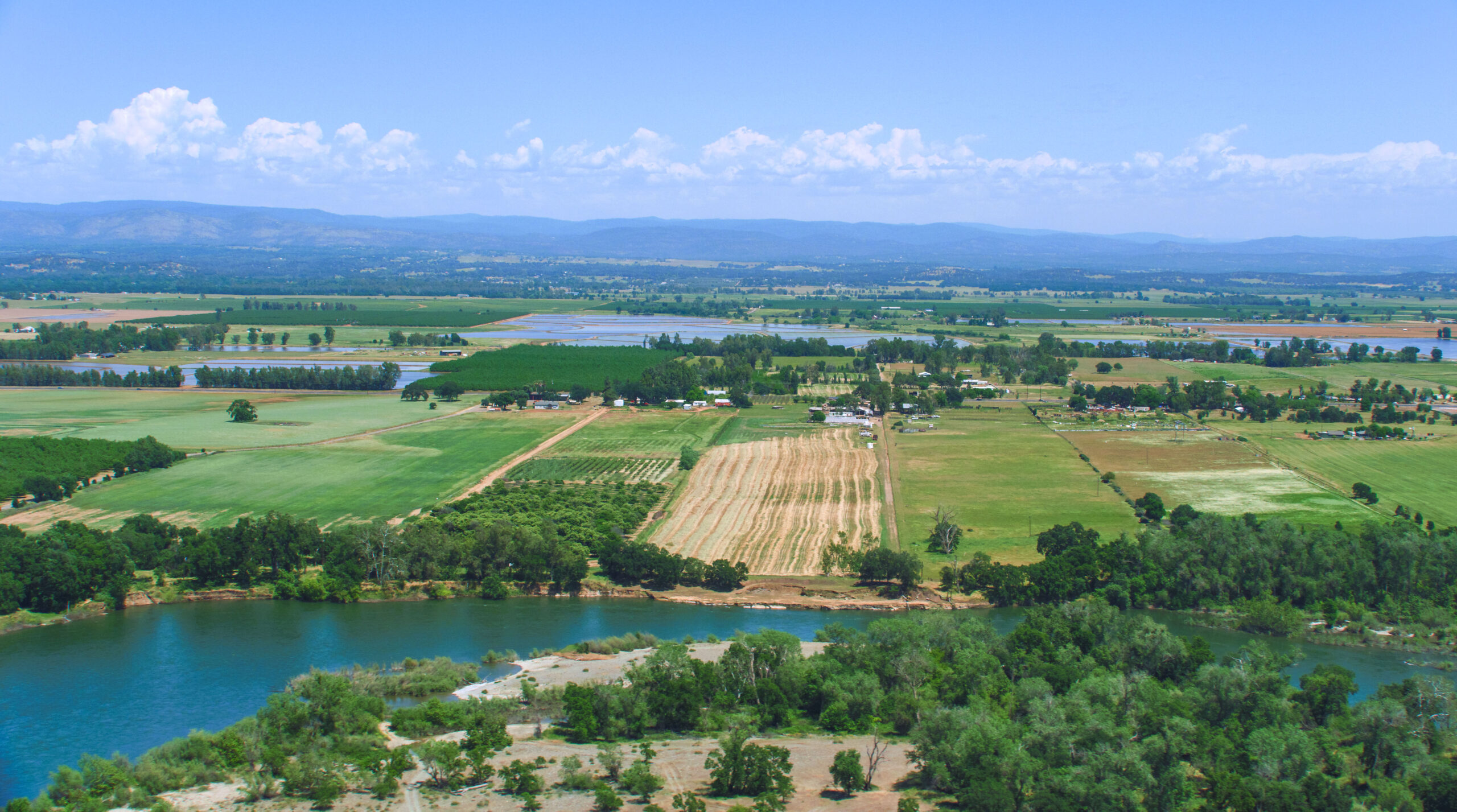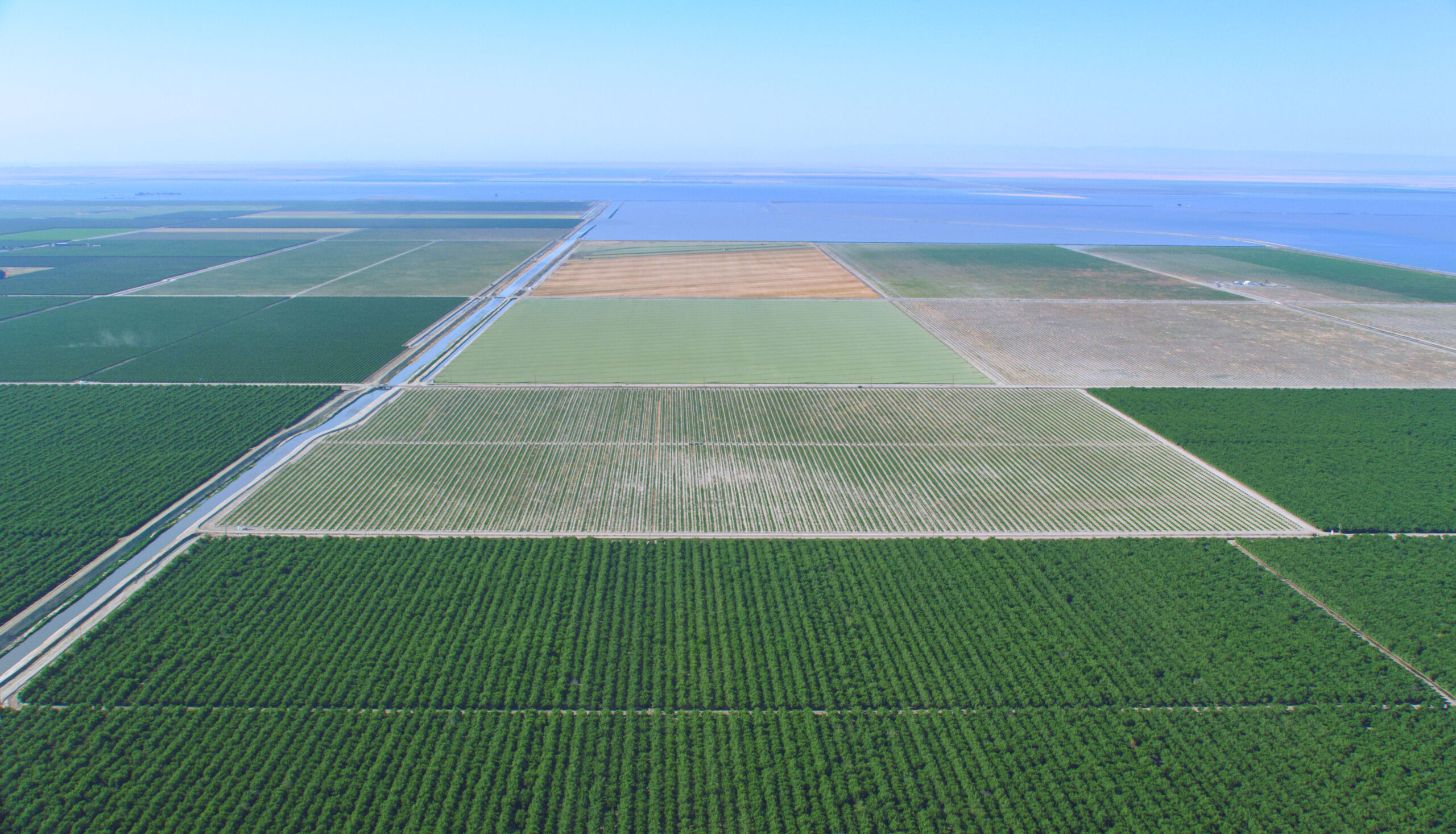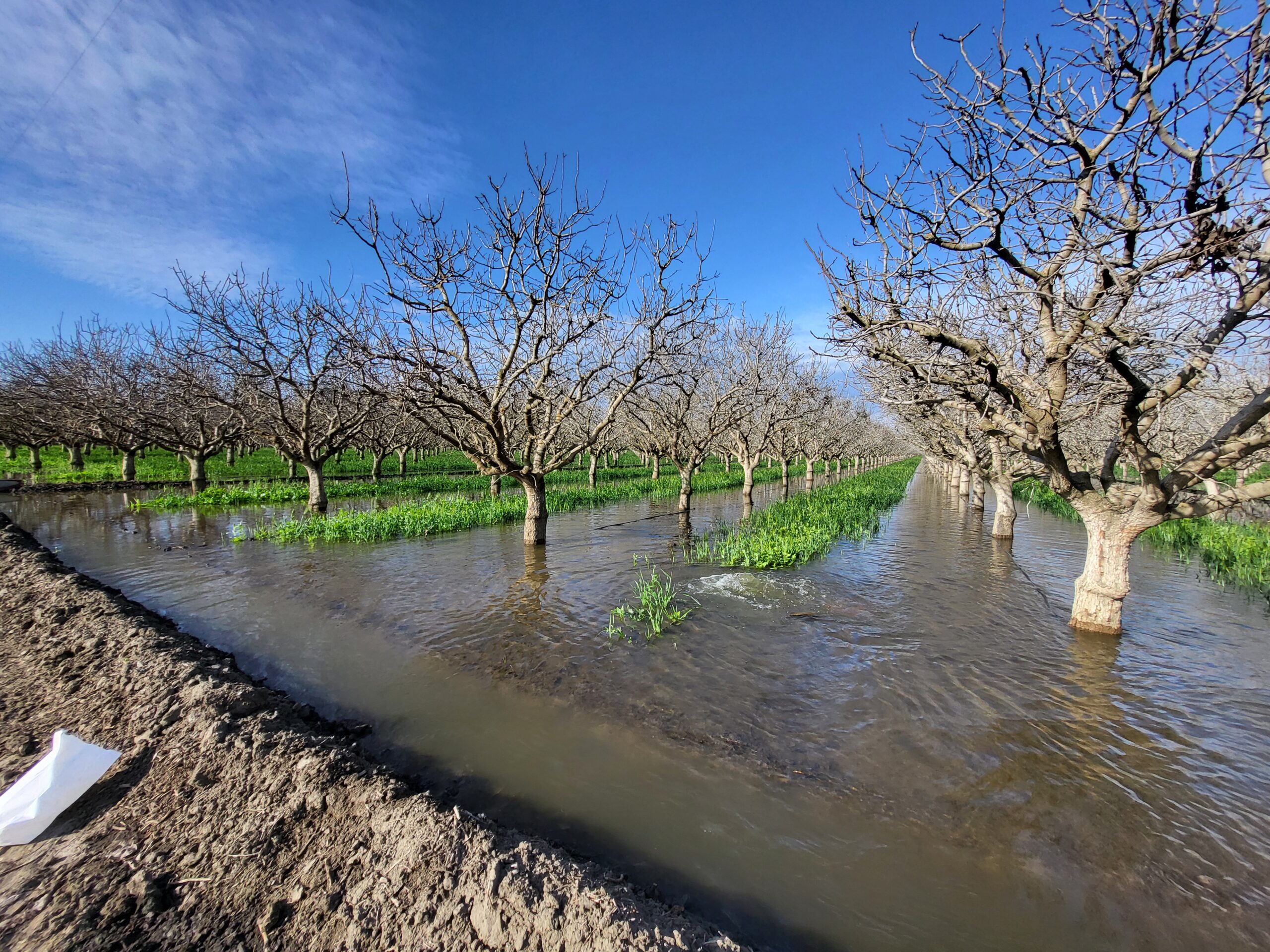
Project Period: November 2024 – June 2027
California’s specialty crop industry stands at a critical juncture. As groundwater restrictions tighten and climate change intensifies water challenges, the agricultural community is committed to keeping working lands in production while protecting communities and ecosystems.
Enter On-Farm Recharge (OFR), a practice that’s gaining momentum as one of the most promising approaches to support groundwater sustainability. By capturing extra surface water directly on agricultural fields and helping it percolate into the aquifer, OFR allows farmers to become active partners in groundwater management while maintaining productive operations.
But what if we could make OFR even better? What if we could enhance water infiltration, reduce nutrient leaching, and improve soil health all at the same time? That’s exactly what we’re exploring through this Specialty Crop Block Grant (SCBG) program project combining cover cropping with on-farm recharge in California pistachio orchards.
This initiative represents a collaborative approach to agricultural research and innovation. Sustainable Conservation’s Solutions in our Soils and Water for the Future programs lead this collaborative research effort, working alongside California State University, Fresno’s California Water Institute (including Dr. Sangeeta Bansal), the American Pistachio Growers, and forward-thinking San Joaquin Valley Pistachio growers.
We also work closely with irrigation districts, Resource Conservation Districts, the Natural Resources Conservation Service, UC Cooperative Extension, and others to maximize project impact and ensure the broader adoption of practices. For example, our partnership with local irrigation districts enabled the implementation of recharge activities during this year’s (2024-’25) relatively dry winter.
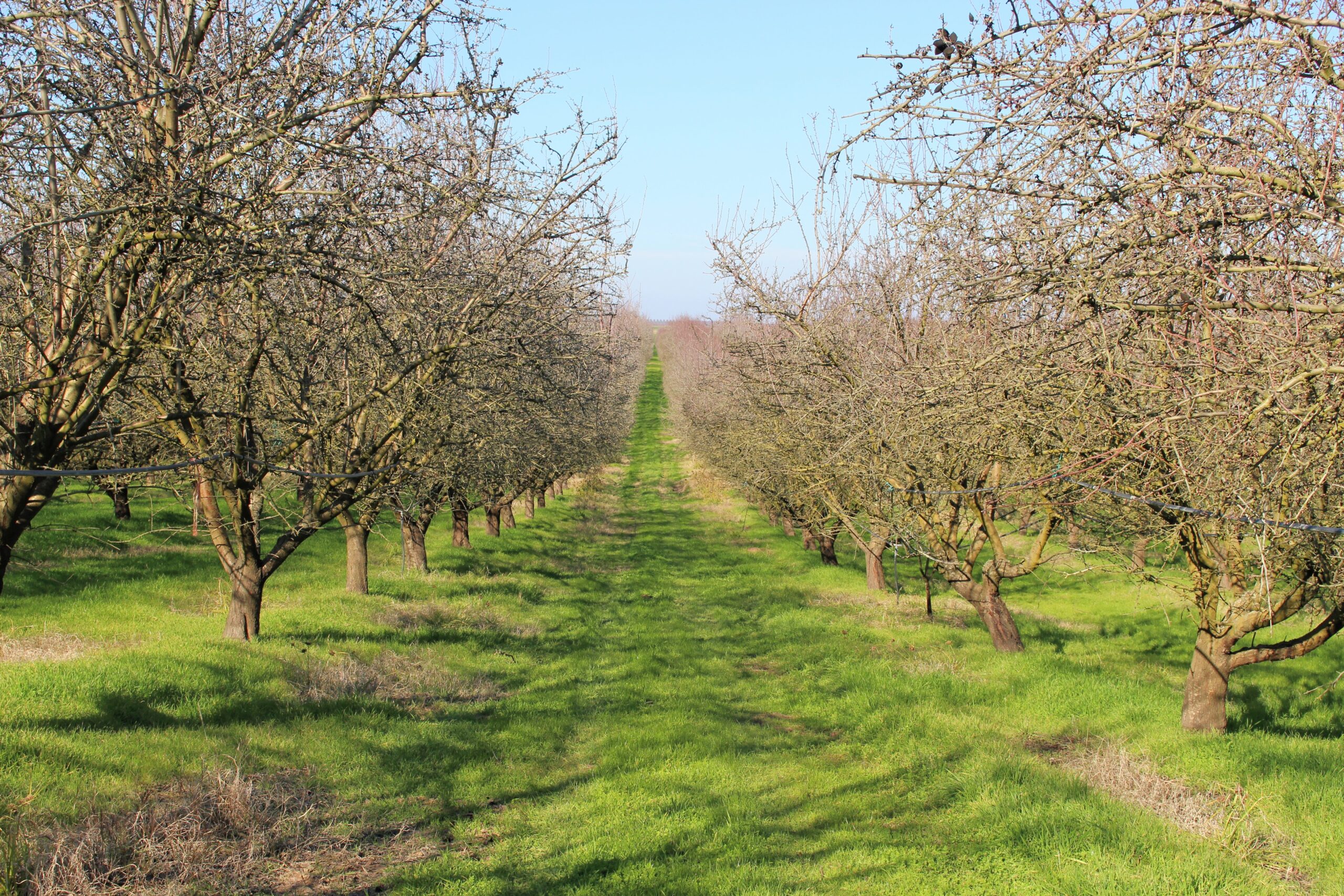
Photos clockwise, starting at top
- Cover cropped almond orchard. Sustainable Conservation
- Groundwater recharge on grape vineyard. Paolo Vescia
- Groundwater recharge pond. Kelly M. Grow/ California Department of Water Resources
Knowledge Transfer
Research is only valuable if it reaches the people who can use it. That’s why we’re developing a comprehensive Recharge Methods Manual specifically for pistachio orchards based on our findings. This practical guide will translate our scientific results and in-field experience into actionable recommendations that growers and their advisors can implement with confidence, building upon the broader OFR Recharge Methods Manual.
We are conducting targeted outreach in the form of field days, webinars, and train-the-trainer workshops to share our findings and expand adoption among growers and technical assistance providers.
Project Updates and Events
Thanks to our partners, we’ve successfully established cover crop and recharge operations at 2 different sites in the vicinity of Tulare. These two pilot growers have completed their first season combining cover cropping and recharge activities, providing valuable data and operational insights that are informing best practice development and research for the coming years.
Together, we have already recharged about 150 acre feet of water across 93 acres, about 46 of which were cover cropped.
Outreach events sharing findings and information are an important part of this work. Event schedules will be posted here and distributed through our partner networks. Contact us at soils@suscon.org to be added to our notification list.
The recording of the first virtual train-the-trainer workshop, which took place on June 11th 2025, is now available!
The next planned outreach even is a fall webinar, date and time TBD. Stay tuned!
Stay updated on this page for outreach event information, new resources, research findings, and project updates as they become available.
Looking Ahead
The combination of cover cropping and on-farm recharge represents a more holistic approach that potentially addresses nutrient leaching, enhances soil health, and maintains economic viability. The results from these orchards will have applications beyond pistachios, potentially benefiting other tree crop systems and regions facing similar water challenges. By documenting both the benefits and the practical considerations of implementing these practices, we’re creating a roadmap for combining cover cropping with OFR – supporting resilient agriculture when it is needed the most.
Both photos courtesy of California Department of Water Resources
Funding for this project was made possible by a grant from the U.S. Department of Agriculture (USDA) Agricultural Marketing Service. Its contents are solely the responsibility of the partners and do not necessarily represent the official views of the USDA.


